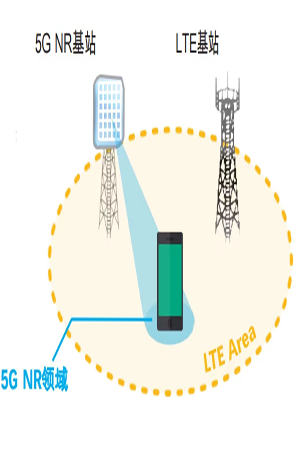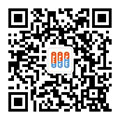China United Network Communications Group Co., Ltd. (China Unicom) terminal equipment into stock - introduction of 5G terminal requirements
1. China Unicom 5G terminal classification
According to the main functions of the terminal, 5G terminals can be divided into:
1) Voice data terminal: terminal equipment that can support both circuit domain or packet domain voice and packet domain bearer services, such as smart phone terminals;
2) Data terminal: terminal equipment that only supports services carried in the packet domain; such as MiFi, data card and CPE, etc.
According to the SIM card of the terminal, 5G terminals can be divided into:
5G single SIM card terminal: only supports one user identification card;
5G dual-card SIM terminal: supports two user identification cards.
2. 5G terminal frequency band requirements
1) The frequency band of 5G terminal NR mode should be selected to support n78, n1.
From April 2020, 5G terminals must support the n1 frequency band and 20MHz system bandwidth. China Unicom will require terminals to support the 40MHz and 50MHz system bandwidths of the n1 frequency band according to the progress of the n1 frequency band standard and the progress of the industry in 2020.
2) For the frequency band support in other modes of the 5G terminal, see "China Unicom 4G Mobile Phone Customization Specification v5.0".
The 5G terminal mode requirements are as follows:
5G mobile phone terminal: at least support 5-mode NR/LTE FDD/TD-LTE/WCDMA/GSM;
5G data terminal: at least support 4-mode NR/TD-LTE/LTE FDD/WCDMA.
3. Functional requirements of 5G terminals in 5G NSA mode
The 5G NSA EN-DC band combinations are as follows:
|
LTE-NR dual connectivity
(LTE/NR)
|
DC_3A- n78A (20MHz/100MHz)Required;
DC_8A-n78A(10MHz/100MHz) Required;
DC_3C -n78A (30MHz/100MHz)Required;
DC_1A-n78A (20MHz/100MHz)Required;
DC_5A_n78A(10MHz/100MHz)Required;
DC_3A-n41A (20MHz/100MHz)Required;
DC_39A-n41A (20MHz/100MHz)Required;
DC_1A-3A-n78A (20MHz/20MHz/100MHz) Recommended;
DC_1A-3C-n78A (20MHz/30MHz/100MHz) Recommended;
DC_40A-n41A (20MHz/100MHz) Recommended.
|
The 5G NSA terminal should support the following basic functions:
4. 5G terminal service requirements
1. Terminal business capability requirements
For NSA mode, the following service type requirements shall be supported:
|
Business Type
|
Requirements
|
Comments
|
|
Conversational Voice (VoLTE)
|
Required
|
QCI 1(GBR)
|
|
Conversational Video (ViLTE)
|
Required
|
QCI 2(GBR)
|
|
PS Domain Session Video
|
Optional
|
QCI 3(GBR)
|
|
Streaming
|
Optional
|
QCI 4(GBR)
|
|
IMS signaling
|
Required
|
QCI 5(non-GBR)
|
|
Interactive games
|
Required
|
QCI 6(non-GBR)
|
|
Interactive TCP
|
Optional
|
QCI 7(non-GBR)
|
|
Preferred large size TCP data
|
Required
|
QCI 8(non-GBR)
|
|
Best effort large size TCP data
|
Required
|
QCI 9(non-GBR)
|
2. Voice service requirements
In NSA mode, 5G terminals must support CSFB and VoLTE (voice/video). Among them, VoLTE functions and services should meet the requirements of "China Unicom LTE Digital Cellular Mobile Communication Network Terminal Equipment Technical Requirements - Volume 1: VoLTE Terminal Technical Requirements V5.0".
VoLTE: 5G terminals should support the continuity of VoLTE services, including the following handover scenarios: handover between NSA cells and NSA cells, handover between NSA cells and ordinary 4G cells, and handover from NSA to 3G cells (eSRVCC).
CSFB: After the 5G terminal should support CSFB, the network-based or terminal-based autonomous fast return (4G); if the 4G cell supports NSA, the terminal should add NR immediately under the instruction of the network.
3. Concurrent business requirements
In NSA mode, the terminal should support concurrent voice and data services.
In the NSA cell, when VoLTE and data services are concurrent, VoLTE services should work on LTE in accordance with the current Unicom network configuration, and data services should work on NR in accordance with network instructions;
When the terminal moves from an NSA cell to another NSA cell, VoLTE and data services should follow the current Unicom network configuration to achieve synchronous handover;
When the terminal moves from the NSA cell to the LTE cell that does not support NSA, the VoLTE call should be maintained, and the data service should be maintained on the LTE according to the current Unicom network configuration;
When the terminal moves from the NSA cell to the 3G cell, the VoLTE call should be able to eSRVCC to the 3G cell, and the data service should be maintained on the 3G according to the current Unicom network configuration.
In the NSA cell, the data service should work on the NR according to the current Unicom network configuration. When a CSFB call is initiated or received, the data service should be able to continue on 3G.
4. SMS service requirements
For NSA mode, 5G terminals should support SMS over IP (IMS) and SMS over
This article is an introduction to the requirements of 5G terminals in NSA mode. If you have products that China Unicom needs to put into stock, you are welcome to consult Deeplight at any time. We will provide the most professional, reliable and accurate testing and certification services.
Recommended items
-

Spark certification and testing process
Spark was established in 1987 as one of New Zealand‘s largest telecommunications operators, providing a wide range of communication services and solutions, including mobile communication, broadband internet, and fixed telephone services. This article is an introduction to Spark certification and testing. Deeplight will provide you with a complete set of certification services and different ...View more -

AT&T FirstNet Testing and Certification Process
The full name of AT&T FirstNet is the First Responders Network, which is the only network built with and serving emergency and support personnel. It aims to meet the constantly changing communication needs through transformative mission critical solutions, in order to achieve modernization of public safety. This article will elaborate on various aspects such as authentication classifica...View more -

5G NR RF and protocol testing services
5G NR is a global 5G standard based on the new air port design of OFDM, and is also the foundation of the next generation of very important cellular mobile technology. Radio frequency testing refers to the testing of high-frequency AC changes in electromagnetic waves. Signaling testing refers to simulating the call connection of a real network and completing signal connection through m...View more -

DeepLight-O2 certification
O2 is a British telecom service provider headquartered in Slough, England, operating under the O2 brand and providing M2M services based on HSPA, HSDPA, UMTS, EDGE, GPRS and GSM technologies.View more




